#Sakakibara Seito
Text
1997-Kobe child murders

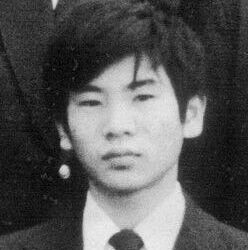

The Kobe child murders (Japanese: 神戸連続児童殺傷事件, Hepburn: Kōbe renzoku jidō sasshō jiken) occurred in Suma, Kobe, Japan, on March 16 and May 27, 1997. Two victims, Ayaka Yamashita (山下 彩花, Yamashita Ayaka), aged 10, and Jun Hase (土師 淳, Hase Jun), aged 11, were murdered by a 14-year-old boy reportedly named Shinichiro Azuma (東 真一郎, Azuma Shin'ichirō),[1][2] under the alias Seito Sakakibara (酒鬼薔薇 聖斗, Sakakibara Seito)。The perpetrator was arrested on June 28, 1997 in connection with the Hase murder, and later confessed to both murders. As a juvenile offender, he was prosecuted and convicted as "Boy A".
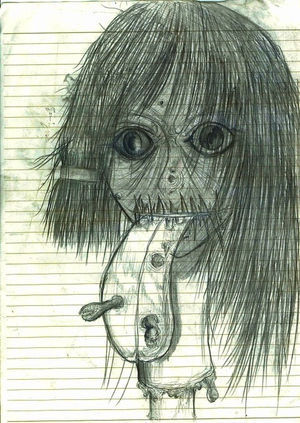
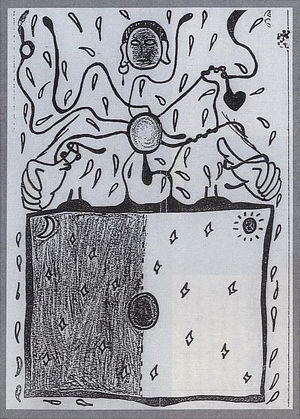
*Four illustrations supposedly drawn by "Boy A"
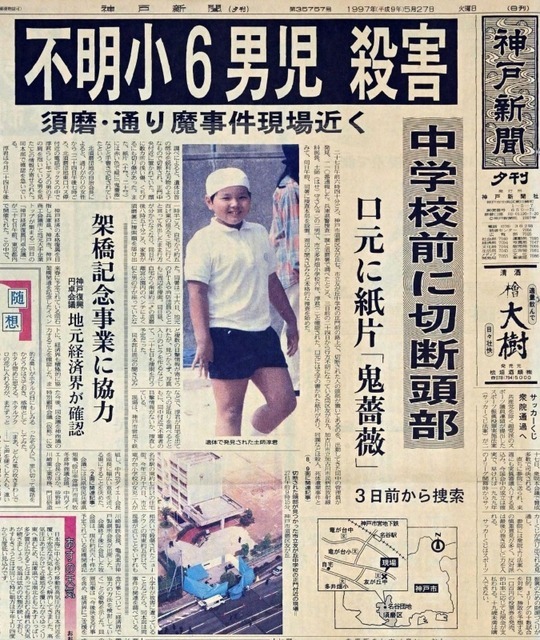

On May 27, 1997, the head of Jun Hase (土師 淳), a special education pupil at Tainohata Elementary School, was found in front of the school gate hours before pupils arrived for classes. Hase had been beheaded with a handsaw, with further mutilations being done before being left in front of the school, for students to discover when they arrived in the morning.


A note, written in red pen, was found stuffed in his mouth, identifying the killer as "Sakakibara". Additionally, some misspelled English was on the note as well: "shooll killer".

On June 6, a letter was sent to the newspaper Kobe Shinbun, in which Sakakibara claimed responsibility for the slaying and decapitation of Jun Hase, and threatened that more killings would follow. This second letter, delivered in a brown envelope postmarked June 3, had no return address or name. Enclosed was a three-page, 1400-word letter, also written in red ink, which included a six-character name that can be pronounced as "Sakakibara Seito". The same characters, which mean alcohol, devil, rose, saint and fight, were used in the first message that was inserted into the boy's mouth.
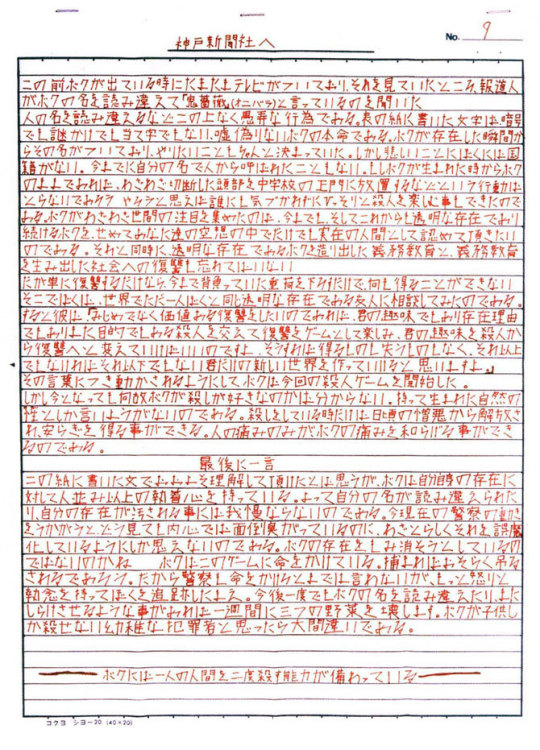
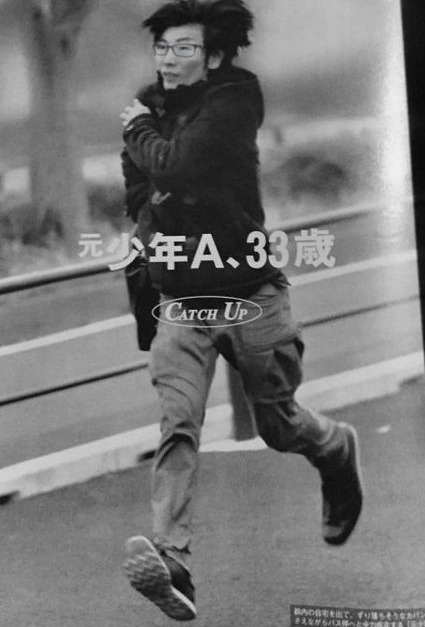
#May.27.1997#Kobe child murders#Boy A#Sakakibara Seito#juvenile offender#child murders#history today
3 notes
·
View notes
Text

The Kobe Child Murders refers to a string of murders that took place in Kobe, Japan, between March and May of 1997. The murders sent shockwaves across the nation and was traumatic for residents of Kobe, many of whom had just been rebuilding their homes and lives that had been shattered by the earthquake that killed over 6,000 people in January of 1995.
On the 10th of May, 1997, a group of young girls were attacked by somebody with a hammer in Kobe, Japan. Miraculously, they all managed to escape relatively unharmed. Six days later, 10-year-old Ayaka Yamashita was attacked by somebody wielding a hammer and a knife. Tragically, she was unable to escape from the attack and was bludgeoned to death.
Just an hour after the attack on Ayaka, a 9-year-old girl was attacked in the same neighbourhood. She sustained several stab wounds. She was rushed to hospital where she survived the attack. Around the same time, a number of animals turned up dead, many of which had been mutilated.
On the 27th of May, pupils of Tainohata Elementary School were met by a gruesome sight as they arrived at school for the day. In front of the school gates was the decapitated head of special education student, Jun Hase, 11, who had been missing for several days. His eyes had been gouged out and his mouth had been slit from ear to ear.
On a hill near the school, police discovered the young boy’s mutilated body. Inside his mouth, the killer had left a cruel note which read: “This is the beginning of the game… Try to stop me if you can you stupid police… I desperately want to see people die, it’s a thrill for me to commit murder. A bloody judgement is needed for my years of great bitterness.”
Following the discovery, the newspaper Kobe Shinbun received a letter from the killer. He identified himself as “Seito Sakakibara” and claimed that he murdered to take revenge on Japan’s education system which is known as being rigid but also known for bullying.
𝐑𝐞𝐚𝐝 𝐌𝐨𝐫𝐞:
38 notes
·
View notes
Text
Japan’s Most Infamous Case | The Sakakibara Seito Incident
youtube
0 notes
Text
“Shinichiro Azuma[1], under the alias Seito Sakakibara (酒鬼薔薇 聖斗 Sakakibara Seito).The perpetrator was arrested on June 28, 1997 in connection with the Hase murder, and later confessed to both murders. As a juvenileoffender, he was prosecuted and convicted as "Boy A".“
..this is just a coincidence right
#sarazanmai#the 'a's floating around isnt the latin 'a' in the first place i assume#but got to this wiki page from a penguindrum video comment#and 'azuma' stuck out#pretty sure its completely unrelated but goddamn
6 notes
·
View notes
Photo
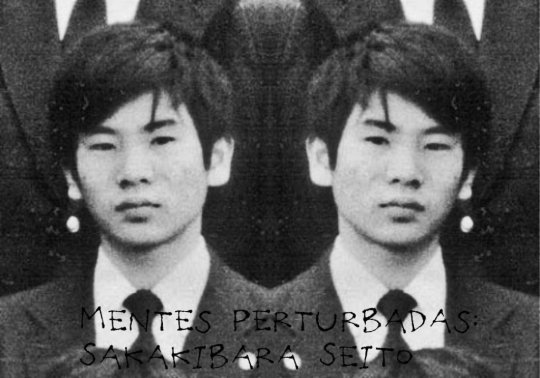
#Relato | Shonen A. La rosa demoniaca
La mañana del 27 de Mayo de 1997 pudo haber sido como cualquier otra. Frente a los niños, justo en la entrada principal de la escuela primaria Tainohata, permanecía ensangrentada y con visibles heridas de tortura, la cabeza de lo que parecía un niño de escasos 11 años. Algunos de los niños comenzaron a llorar, […]
Leer más
0 notes
Photo
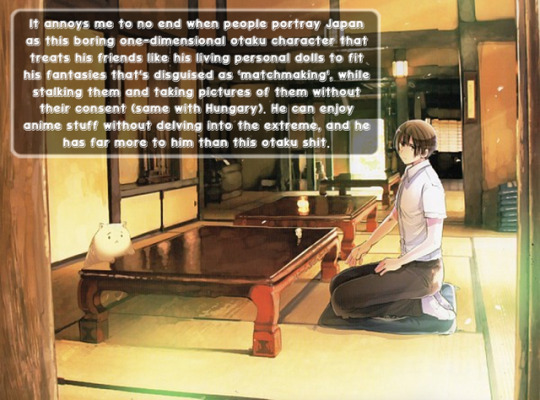
“It annoys me to no end when people portray Japan as this boring one-dimensional otaku character that treats his friends like his living personal dolls to fit his fantasies that’s disgusised as ‘matchmaking’, while stalking them and taking pictures of them without their consent (same with Hungary). He can enjoy anime stuff without delving into the extreme, and he has far more to him than this otaku shit.”
Adding to the above submission, I think most fans just do that portrayal because they have no idea what an otaku is and they can’t be bothered to look it up.
An otaku is a very negative thing in Japan. Though it does equate to “geek”, the connotations are far worse. An otaku is basically someone who’s obsessed with something to the point it runs their lives. They’re basement-dwelling that are too engrossed with their obsession. Western people seem to think otaku only appear in anime, but that’s a myth - there are all kinds of otaku. Game otaku, cosplay otaku, idol otaku, military otaku and even trains otaku.
The negativity of otaku stemmed from two cases. The first is the Otaku Murders committed by Tsutomu Miyazaki who was an anime and horror movie otaku. The second was the Kobe Child Murders committed by a boy who was a weapons otaku dubbed “Seito Sakakibara” with his real name never being disclosed.
I won’t give details for both cases because I don’t want someone to get upset or sick, but let’s just say both murders involved young children, and they were not pretty. They were horrible and frightening, and downright sick.
Moving on from that, remember Hayao Miyazaki? Esteemed animator and makes some of the best anime movies like Spirited Away, Princess Mononoke and Howl’s Moving Castle? He hates otaku. He even assesses that the anime industry is being stunted from its true potential because of their audience which consists of otaku (which I can’t help but agree with). He even assess that because the anime industry is filled with otaku - people who cannot bear to look at other people - the anime itself suffers. However, he hates gun otaku the most - even calling them pistol nuts.
This probably went on longer than I wanted, but the subject of otaku is something that tires me out. Because it tells me that people aren’t assed to bother learning of the connotations or cultural impact of something and just make it some kind of thing to be “proud” of when in reality it might end up upsetting someone as well as ignoring their culture.
- Mod V
P.S: Don’t bother arguing “well, we’re Western otaku! That’ sdifference!” Why don’t you just stop using the word and just say you’re a fan or you like the thing? Otaku is not a Western word, it’s Japanese, and thus it brings with it Japanese connotations. How would you like it if I grabbed a word from your culture, not bother understanding its actually negative connotations, be proud of it, and blatantly ignored you when you try to tell me that that’s not right or cool? Bet you wouldn’t be so happy, would you?
#tag: japan#character opinion#interpretations#anti-otaku#admin v rants#sorry for my huge part#but this is something that REALLY peeves me off#i especially hate it when i see western anime fans go 'i'm proud to be an otaku!'#i bet you don't know what the flying fruit frack that word even means in japan#and they claim to love japan and everything japanese and respect them and it#yeah#respect my ass
34 notes
·
View notes
Photo



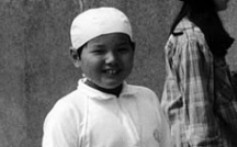
The Kobe Child Murders refers to a string of murders that took place in Kobe, Japan, between March and May of 1997.
On the 16th of March, a group of young girls were attacked by somebody yielding a hammer in Kobe, Japan. 10-year-old Ayaka Yamashita died from her injuries but the others managed to escape. On the 27th of May, pupils of Tainohata Elementary School were met by a gruesome sight as they arrived at school for the day. In front of the school gates was the decapitated head of special education student, Jun Hase, 11. On a hill near the school was the young boy’s mutilated body. Inside his mouth, the killer had left a cruel note which read: “This is the beginning of the game… Try to stop me if you can you stupid police… I desperately want to see people die, it’s a thrill for me to commit murder. A bloody judgement is needed for my years of great bitterness.”
Following the discovery, the newspaper Kobe Shinbun received a letter from the killer. He identified himself as “Seito Sakakibara” and claimed that he murdered to take revenge on a rigid education system. “It’s a big mistake to think that I am a childish killer who can only kill children,” the letter read. The letter repeated the earlier warnings of future killings and taunted the police. The letter in the writing matched the letter found in the mouth of Hase indicating that is was genuine and not a hoax. In the letter, the killer referred to children as “dirty vegetables” and threatened to kill three a week if his name were misreported - initially, the media referred to the killer as “Onibara.”
On the 28th of June, a 14-year-old school student was arrested as a suspect in the murders. Following his arrest, he confessed to the murders. Due to being a minor, he was prosecuted and convicted as “Boy A.” In his home, police found a diary in which he described the murder of Yamashita. “I brought the hammer down, when the girl turned to face me. I think I hit her a few times but I was too excited to remember.” In 2004, Sakakibara was released on a provisional basis with a full release announced to follow on the 1st of January, 2005.
In 2015, Sakakibara published a memoir which dwelled on his murders and left and air of ambiguity about the extent of his regret. “Let me confess something: I thought the sight was a beauty,” he wrote, referring to displaying Hase’s head in public view. He also confessed that before displaying the head, he took it to the bathroom in his home and committed a deed “far more heinous than murder.” The same year, the Shakan Post publicly identified Sakakibara as Shinichiro Azuma. He currently lives in Saitama Prefecture in the north of Tokyo.
652 notes
·
View notes